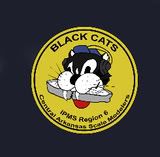While selecting items to add to a Tamiya M4, I examined the gas cans provided with the kit. They were not bad, I judged, but there was something missing. These plastic replicas had a “G” for “gasoline” at the top of each half section that made up the body of the can, and one of the halves had “US” inscribed at the bottom of the piece.
A bit of research showed that the old, but still good Italeri set of U.S. and German gas cans would yield a more authentic product, so I chose to use them over the Tamiya cans. A completed Italeri U.S. fuel can has “U.S.A.” at the bottom on one side, and “Q.M.C.,” for “Quartermaster Corps” at the bottom of the other side.
Whether German or American, gas cans for plastic models are assembled the same way—the body of the can comes in halves that are glued together. This works great for the famed German “jerrycan.” The real item had a prominent seam running around the can’s body from top to bottom. American gas cans were made differently. The top and bottom of the can should be separate, solid pieces; between the top and bottom, the main body of the can is a single piece of sheet steel, wrapped around to join at the can’s long side (away from the filler cap). That’s where the only visible seam on a World War II American gas can should be.
The first thing I did after joining the halves of three Italeri U.S. gas cans was to flood their bottoms with gap-filling super glue. By “flooding,” I mean I covered the entire bottom of the can. I set the cans in inverted, upright position to let the glue level and set. Next came filling all seams except for the long side between the cans’ top and bottom with green putty thinned with liquid styrene glue.
Once all puttied areas were sanded, I added handles and caps to the cans. I filled any gaps where the handles met the body of the can with thick super glue in order to make a smooth join. Lastly, I used a Dremel tool to add dents to the cans—they weren’t handled gently. The truly anal-retentive will want to add the retaining wire that attached the can’s cap to its handle; I did not.
The point of all this is that small things add up. Finding the most accurate gas cans I could locate and doing some simple things to make them look right was an effort that few may ever notice. But when many small corrections and additions accumulate in the construction of a model, the end result can be something that makes knowing viewers look twice.
We may never know if anyone but ourselves has derived any satisfaction from improvements we have made to a model. On the other hand, if our model “brings home the gold,” we may not know if those improvements were what brought us victory—but we do know they sure can’t hurt!


